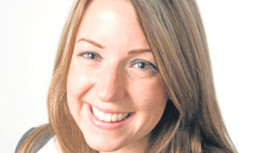Earlier this month the Marriage and Civil Partnership (Scotland) Act 2014 came into force, which made it legal for same sex couples to get married.
The Act abolishes previous legislation that excluded same sex couples from participating in the institution of marriage, which was previously only available to members of the opposite sex.
As a result, the first marriage ceremonies between people of the same sex in Scotland will take place on Wednesday.
Q I am already in a civil partnership. Can I change it to a marriage?
A Yes. There are two methods for doing this.
* There is an administrative process which will result in the civil partnership being converted to marriage. To do so, the civil partnership must have been registered in Scotland and must not have been dissolved, annulled or ended by death.
* Alternatively, couples are free to marry by participating in a marriage ceremony which can either be civil, religious or belief.
The civil partnership will end at the point the marriage is formalised.
During the first year of the legislation coming into force there will be no charge for converting a civil partnership into marriage. Once converted, the couple will be legally treated as having been married from the date of registration of their civil partnership, rather than the date that this was converted to marriage.
Q Who can perform the marriage ceremony?
A A religious or belief body may opt in to perform such ceremonies.
However, there is no duty placed upon these organisations to perform same sex marriage ceremonies.
This provision in the legislation ensures religious bodies are adequately protected and cannot be forced to solemnise a same sex marriage if it is against their beliefs.
Q Where can the ceremony take place?
A Existing legislation has been amended to provide that civil marriage ceremonies for both same sex couples and opposite sex couples can take place anywhere other than religious premises, provided that the venue is agreed by the couple and the registrar, rather than having to take place at ‘approved places’.
Previously a venue needed a permit, which had to paid for and renewed every few years, to host a civil partnership ceremony. The new legislation has removed that requirement.
Q Does this mean opposite sex couples can now become civil partners too?
A No. The Scottish Government has promised to consult early next year on whether civil partnerships should be opened up to opposite sex couples.
Many hope that in the future all three legally recognised relationship options (cohabitation, civil partnership and marriage) will be available to both same sex and opposite sex couples.
Any couple in an existing civil partnership who are considering converting it to marriage should obtain legal advice in advance.
The retrospective nature of the legislation means the couple will be deemed to have been married from the date of their civil partnership and not the subsequent date of marriage.
That can have a significant impact on the treatment of any assets/liabilities which either party may have accrued during any earlier trial separation periods.
* By Amanda Wilson, associate, Thorntons. Thorntons is a trading name of Thorntons Law LLP
